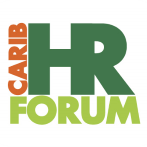 Well I guess it depends on who is asking this question.
Well I guess it depends on who is asking this question.
We will explore this from the business perspective that is from the eyes of the line. (The People Management magazine of the Chartered Institute of Personnel and Development dated 18 September 2008 was used to help develop this article.
First of all HR should understand) what drives the business and what is their optimal operating model. In my organisation, we have adopted the Business Partnering model where the line is our first customer. This model was driven by the business and adopted to deliver on the needs of the business.
We also used the McKinsey 7-S framework, the strategy shapes, the structure, systems, leadership styles, shared values, skills and staff. We had to review all of it and the transition has been and is still is challenging. The main change is who is your primary customer and what this means for your role and the associated services.
We are expected to work through the line, where the line assumes prime responsibility for their staff and we advise and support the line. It is just as important for the line to understand what this means as it is for all HR personnel to understand what this means.
Gone are the days when the line says “HR wants to see you” to an employee with the intention of delivering some kind of reprim. This is now the role and function of the line consistent with the total management approach.
One of the first things that we did before moving to this model, external consultants conducted in-depth surveys with all the major stakeholders to determine what they like about HR and what they would like to see in the future and what HR can do differently to be of strategic value. We needed to ask our customers what they want and what they thought of our current services.
We found that HR needed to be more responsive, more visible, and more accessible with faster response times with quality and error free work and related advice. Managers wanted HR to understand the business and the workforce where they can help management balance employee needs with business needs. Our customers want us to have an increased impact on the strategy of the business, but we need to illustrate that we deserve that recognition and role. Essentially our customers want HR to identify potential people implications early on so the business can mitigate against potential fall out by working with the people affected.
The line also needs tremendous support in time of change, either a system change, a structure change, a new product line or a new distribution channel. Whatever the change; HR must show the line the required support by being present and providing solid advice and required tools to work through the challenges.
We also received feedback that our advice seems inconsistent at times as it depends on who an employee speaks with. This means that all HR must be on the same page and general internal training among the HR team is compulsory regardless of a specific role. In addition to knowledge sharing, it also helps create a positive learning environment for your HR team to learn, develop and grow.
The transition to the “Business Partnering” model has been painful but fruitful. The HR representatives had to make leap in their thinking, where they are more empowered to solve problems and suggest solutions as opposed to processing transactions. The majority of the administrative transactional activities were stripped away from the HR staff in the business and hived off to the shared service. All the roles in HR had to be revised with high expectations while ensuring the right skills existed among the selected candidates.
The HR team has been a great asset and I congratulate each of them on their willingness, cooperation and commitment as we continue to take on challenges and succeed – The Guardian HR Team (Guardian Holdings Group, Trinidad).
Denise Ali
[email_link]
